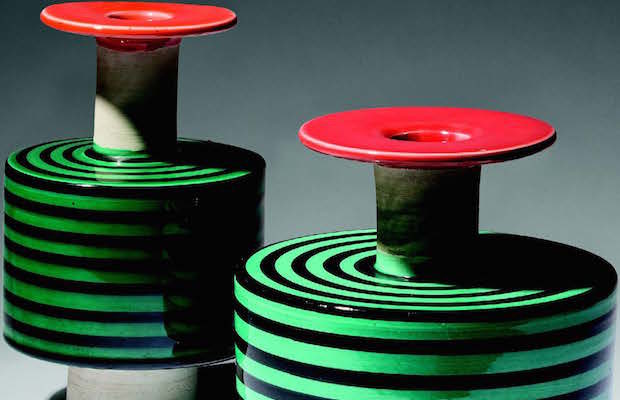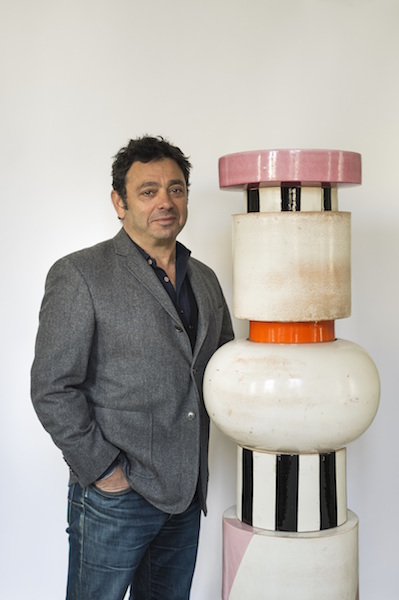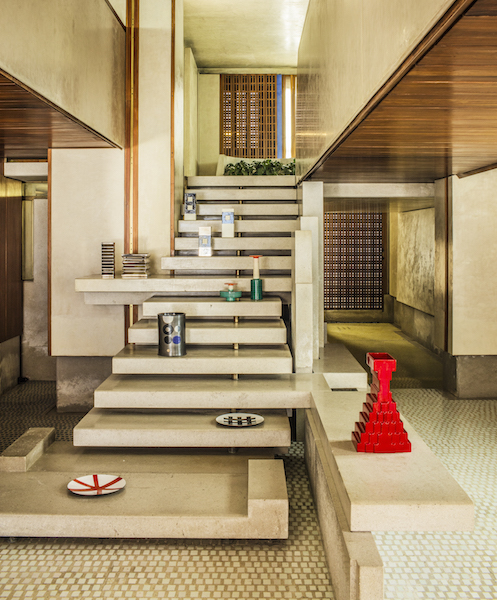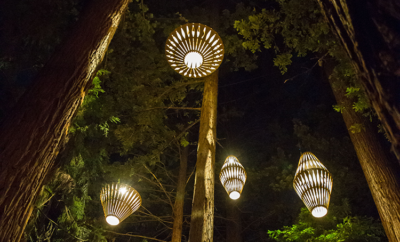 © Jacques Pépion Photo
© Jacques Pépion Photo
Design
Paying Homage to Ettore Sottsass
CHARLES ZANA, ONE OF PARIS’S most sought-after architect and interior designer, is not only an admirer of Ettore Sottsass, he is also an avid collector of his work. During his more than six-decade career, Sottsass created architecture, furniture, jewelry, ceramics, glass, silver-works, lighting, and office equipment. Perhaps his towering achievement was the founding of Memphis, the design collective that ushered in the 1980s with a bold thumbing of its collective nose at the International School. When it debuted during the Milan furniture fair in 1981, Memphis created a shock felt round the world and unleashed a flood of creativity that moved in several directions, all away from the accepted orthodoxy of modernism.

Architect and interior designer Charles Zana stands next to a totem by Ettore Sottsass from the collection Menhir, Ziggurat, Stupas, Hydrants & Gas Pumps. Produced by Bitossi and shown at the Enzo Sperone Gallery in Milan in 1967, the totems are assemblages of circular ceramic elements related to architecture of the past and more contemporary objects. © Matthieu Salvaing
While Memphis never achieved great commercial success, its influence is still felt, and its name is well-known. That aspect of Sottsass’s career has been widely exhibited and written about. “I like Italian design,” Zana says. “And I understand that he was the one who mattered—who made the big break.” But it is Sottsass’s early work that interests Zana, especially his ceramics. So, on the occasion of the fifty-seventh Venice Biennale and in celebration of Sottsass’s hundredth birthday, Zana is presenting an exhibition at the Olivetti Boutique that runs to August 20. Zana chose the venue to juxtapose the building—designed by Carlo Scarpa in the late 1950s—and Sottsass’s aesthetic, naming the show Dialogo.
Zana believes that Scarpa was the forerunner of Sottsass, citing Scarpa’s research on form, color, and matter. He says that the architect, who died in 1978, developed a unique vocabulary—from his use of raw lava to Tantric pieces—that Zana likens to pop art. He worked in everything from terra-cotta to enamel, and from smooth to rough. Sottsass’s work, Zana believes, echoes that of this Venetian master believed by many to be Italy’s greatest architect of the twentieth century.

The interior of the Olivetti Boutique in Venice, designed by Carlo Scarpa in the late 1950s, where Zana is presenting an exhibition of Sottsass’s work in honor of the designer’s one hundredth birthday. A range of pieces is on display, including Vasi a Onde, 1969; Ceramiche a Colaggio, 1962–1963; Ceramiche delle Tenebre, 1963; and Yantra, 1969. © Jacques Pépion Photo
One of Scarpa’s most significant projects was the Olivetti Boutique, or Gallery. The company wanted it to serve not only as a showplace for its typewriters and adding machines but also for Scarpa’s architecture. With its stone staircase that seems to be suspended in midair and its fusion of modern techniques with traditional Venetian materials such as stucco and mosaic, it feels like an intricate jewel box.
In this landmarked environment, on the north side of the Piazza San Marco, Zana is presenting ten different collections by Sottsass, most of them produced by Bitossi, an Italian ceramics company that can trace its roots to the sixteenth century.
The Olivetti Gallery is doubly appropriate for the exhibition because Sottsass, too, had a strong connection to the company. Besides designing for Olivetti for many years—producing work that included the famous Valentine typewriter, which he created in 1969—he also had strong personal ties. When Sottsass returned from his first trip to India in 1961 he was diagnosed with a disease that no Italian doctor knew how to cure. Roberto Olivetti sent him to Palo Alto, California, for treatment by a Nobel Prize–winning doctor, and paid for his travel and care.

Ceramica di Lava, 1957, another piece from Richards’s collection. © Jacques Pépion Photo
The show begins with Sottsass’s work from 1955 to 1959 for Bitossi and Raymor, the pioneering American company founded by Irving Richards. Zana believes that this group shows Sottsass as a painter on ceramics, not an architect. It includes Ceramiche di Lava (Lava Ceramics), made in 1957 from a mixture of soil and chamotte— cooked, crushed, and sifted clay. The exhibition continues with a nod to his love of industrial forms, apparent in Rocchetti & Isolatori (Bobbins and Insulators), 1961– 1962; Ceramiche a Fischietto (Ceramic Whistles), 1962; and Ceramiche a Colaggio (Ceramic Castings), 1962–1963—his first collection made as a series. Two of the groups on display, the 1963 Ceramiche delle Tenebre (Darkness Ceramics) and 1964 Ceramiche di Shiva, were created after his life-threatening illness. Menhir, Ziggurat, Stupas, Hydrants & Gas Pumps, introduced at the Sperone gallery in Milan in 1967, are huge totemic forms, miniature pieces of architecture. Sottsass’s interest in Tantric art and his passion for Indian culture are seen in Tantra and Yantra, two groups comprising thirty-two large works in bold colors and strong geometric shapes.
Twenty-five of the sixty pieces in the show are from Zana’s personal collection, and, he says that many have never been exhibited before. Zana has spent years amassing his trove. It’s his passion. “Collectors are like drug addicts,” he says. “That’s why they call the people who sell them dealers.”

Two pieces from the collection Sottsass designed, 1955–1959, for Irving Richards, founder of Raymor, and produced by Bitossi. © Jacques Pépion Photo












